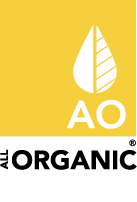Beware of Replacement Chemicals
Posted on November 25 2019

By Asquith Williams, COO Charlotte Products
Glad to see that a certain substance has been removed from your favourite cleaning product? Before you get too excited, make sure you find out what it’s been replaced with. When looking for the healthiest chemicals to use when cleaning your buildings, it is important to be aware of replacement chemicals. You may have heard about a specific ingredient being flagged for a health concern, or even banned. However, do you actually know what ingredient was added in place of that chemical?
Certain chemicals have become household names because of their associated health concerns, like BPA, triclosan and sodium lauryl sulfates. Manufacturers have been quick to label their products free of these substances, as a marketing tactic designed to promote safety and health, often times without ever backing up those claims.
As a purchaser, it’s important to be skeptical of any marketing claims and always look at what ingredients are in the products you buy, rather than just what isn’t in them.
What’s Hiding Behind that Marketing Label?
In the case of sodium lauryl sulfates (SLS), the chemical was forced out of demand very quickly.
Unfortunately, it is often the case that we know less about the chemical it is being replaced with, and it could potentially be even more toxic than SLS. Having been studied for 100 years, SLS has a detailed toxicity record. In contrast, many of the newer replacement chemicals that manufacturers are using, have only been available for 10 years and we don’t yet understand their toxicity implications.
In the U.S., triclosan, a common ingredient in many antibacterial cleaning products, was recently banned. Manufacturers replaced this ingredient with new substances including chloroxylenol, benzalkonium and benzethonium chlorides. However, the safety and efficacy of these substances have been called into question and are now being analyzed by the U.S. Food and Drug Administration to see if a further ban will be necessary.
How to Be a Savvy Purchaser
As more attention is paid to the safety of certain chemical substances available in cleaning products, it is incumbent upon purchasers to continue to be vigilant about what is in the products they use. Manufacturers may be inclined to use the news cycle to their advantage through clever marketing campaigns that promote the absence of certain substances, without ever revealing the substances that have replaced them.
Always look for a third-party certification like USDA Certified Organic, UL’s Ecologo, the U.S. EPA’s Safer Choice Program or Green Seal to ensure that cleaning products are not only effective, but safe. These third party certifications indicate that the cleaning product has undergone rigorous scientific testing to prove that it is compliant with stringent, third party environmental performance standards while still remaining effective.
These certifications are aware of the dangers of replacement substances, and have designed their testing program to ensure that safe, environmentally preferable substances are used as ingredients in products that earn certification.
Our team of chemists studies the toxicity profiles of every substance we put into our products, analyzing data and conducting our own stringent testing to ensure we find the safest ingredients possible to add to our products. We also seek out third party certification from USDA or UL’s Ecologo so that our customers can have additional peace of mind. It’s important for us that we transfer our knowledge regarding chemistry, safety and the environment to the end users so that everyone can feel empowered to make safe, healthy decisions. That will help us make safer, healthier spaces together.


0 comments